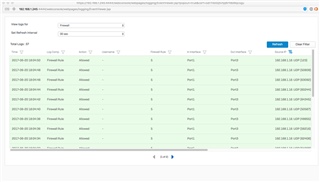I have recently changed my home network from a SG VM to XG VM running on ESXi
I am getting errors when running Netflix via Apple TV
To try get around this, I created a new firewall policy as follows:
- Rule Name: Bypass Web
- Source Zones: LAN
- Source Networks and Devices: Bypass MAC's (with a MAC List with my ATV's in there)
- Destination Zones: WAN
- Destination Network: Any
- Services: Any
- Match known users: Unchecked
- All Malware Scanning: Unchecked
- Advanced:
- Intrusion Prevention: None
- Traffic Shaping Policy: None
- Web Policy: None
- Application Control: None
- Apply Web Category based Traffic Shaping Policy: Unchecked
- Apply Application based Traffic Shaping Policy: Unchecked
- Rewrite source address (Masquerading): Checked
Even in the firewall log I get all green:
What am I doing wrong?
Thanks
This thread was automatically locked due to age.




